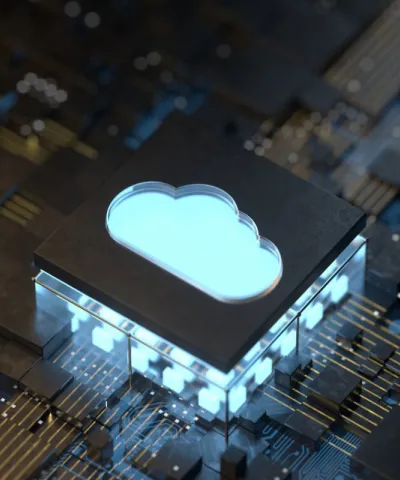Recap
The 1990s cemented semiconductors as the backbone of the digital revolution, with personal computing, the internet, and mobile communications driving unprecedented demand. The "Megahertz Wars" among microprocessor makers, the rise of networking ASICs, and the mainstreaming of DRAM all shaped pricing dynamics. Meanwhile, the foundry model, led by TSMC, gained traction, allowing fabless companies to thrive. Globalization introduced new cost pressures, with Asian manufacturers dominating memory and logic markets. By the decade’s end, the industry was balancing rapid innovation with soaring capital expenditures, setting the stage for the mobile and cloud revolutions of the 2000s.
Introduction
As the 21st century dawned, the semiconductor industry found itself at the crossroads of sweeping technological transformations. The early 2000s began with the dramatic collapse of the dot-com bubble—an event that jolted technology investments, altered market trajectories, and set the stage for a decade where semiconductors would become even more deeply intertwined with everyday life. Mobile devices, once clunky novelties, rapidly evolved into robust computing platforms. Meanwhile, network infrastructure scaled up in response to growing internet bandwidth demands, and data centers emerged as the nerve centers of the digital economy.
In this article, we explore how semiconductor pricing adapted to a world reshaped by the aftermath of the dot-com bust, the explosive rise of smartphones, and the relentless push toward smaller process nodes. We’ll examine how chipmakers weathered cyclical downturns, leveraged new manufacturing paradigms, and reinvented pricing strategies amid rising capital costs and escalating competition. Through the lens of major product categories—from microprocessors to mobile systems on a chip (SoCs) to specialized networking silicon—we gain insight into how the industry balanced innovation and affordability in a decade that bridged the PC-centric world of the 1990s and the fully connected era of the 2010s.
After the bubble: Turbulence and recovery
The dot-com bust and its immediate aftershocks
The new millennium started on shaky ground for tech companies. As the dot-com bubble burst around 2000–2001, venture funding dried up, and many internet-focused businesses shuttered. Demand for server hardware, networking equipment, and enterprise software fell precipitously. Semiconductor firms, which had expanded aggressively in the late 1990s to meet surging dot-com era demand, suddenly found themselves saddled with excess fab capacity.
- Impact on pricing: In the early 2000s, overcapacity led to a glut of commodity chips such as DRAM and certain types of CPUs, forcing down prices. Many suppliers-initiated cost-cutting measures—closing older fabs, reducing headcount, and consolidating product lines—to stabilize margins.
Gradual market rebound
By 2003–2004, however, the tech landscape began to recover. Corporate IT budgets gradually thawed, fueling renewed interest in server expansions. Consumer segments also started to rebound, with low-cost PCs and nascent mobile devices returning to growth trajectories.
- Emergence of value PCs: Companies like Dell and HP pushed aggressively into affordable desktop and laptop computers, creating intense price competition among microprocessor and DRAM suppliers. Even though selling prices shrank, higher volumes and improved yields helped offset some of the margin pressures.
- Rise of Wi-Fi and broadband: Broadband internet access accelerated, boosting demand for wireless access points, routers, and modems. These networking-centric chips often commanded moderate to higher margins, given their complexity and customization for different broadband standards (DSL, cable, early fiber, etc.).
A paradigm shift: Mobile devices take center stage
Early smartphones and ARM’s ascent
Mobile phones had already gained popularity in the 1990s, but the early 2000s were transformative. Companies like Nokia, Motorola, and BlackBerry competed to offer increasingly feature-rich handsets, while semiconductor firms supplied mobile-specific processors, RF components, and power management chips. The ARM architecture, thanks to its energy efficiency, became the dominant choice for mobile processors.
- System-on-a-chip (SoC) integration
Mobile semiconductors began consolidating application processing, graphics, and baseband capabilities onto a single die. This integration enabled smaller, more power-efficient devices—and justified premium prices for leading-edge SoCs that offered better battery life, performance, or advanced multimedia features. - Branding and co-marketing
For the first time, certain chipmakers found success with direct branding on mobile devices. “Intel Inside” had been a hallmark of the PC era, but the mobile space also saw co-branding deals (e.g., devices advertised as having specific Qualcomm Snapdragon chips or NVIDIA Tegra processors). These partnerships reflected a growing marketing emphasis on chip capabilities—and occasionally allowed chipmakers to command a slight pricing premium.
The iPhone revolution
Apple’s 2007 introduction of the iPhone fundamentally redefined smartphones, weaving advanced processing, a robust operating system (iOS), and a revolutionary touch interface into one device. Though the true explosion of mobile computing would come in the following decade, the late 2000s already showed a rapid shift toward data-hungry applications and always-on connectivity.
- Impact on pricing: High-end smartphones relied on advanced SoCs, specialized power management ICs, and high-density mobile DRAM or NAND flash. These components often carried elevated prices compared to earlier-generation mobile chips, reflecting both their complexity and strong consumer willingness to pay for cutting-edge user experiences.
- Supply chain evolution: Foundry services in Taiwan and elsewhere scaled dramatically to meet surging smartphone component demand. Volume discounts and long-term capacity reservation deals became widespread strategies, ensuring large OEMs could lock in supply while securing favorable pricing.
Process node shrinks and soaring fab costs
The move to 130 nm, 90 nm, and 65 nm
Following on the sub-micron trends of the 1990s, the 2000s saw process nodes progress from around 130 nanometers down to 65 nanometers (and nearing 45 nm by decade’s end). Each successive node required more advanced lithography (deep ultraviolet or immersion), improved materials (low-k dielectrics, copper interconnects), and increasingly intricate process steps.
- Economics of scale: While smaller nodes enabled higher transistor counts and better performance per watt, fab construction costs skyrocketed—frequently surpassing $2–3 billion for state-of-the-art facilities. To offset these staggering investments, semiconductor companies had to operate near full capacity, driving them to pursue high-volume product lines or close partnerships with large customers.
- Winners and losers: Not all firms could afford to keep pace with each new node. Many transitioned to fabless or fab-lite models, outsourcing leading-edge manufacturing to foundries like TSMC and UMC, while retaining older lines for mature products. This shift reshaped pricing dynamics, as foundry competition (and eventually consolidation) set the per-wafer cost basis for many fabless chip companies.
Wafer size expansions
Although the transition from 200 mm (8-inch) to 300 mm (12-inch) wafers began in the late 1990s, it accelerated throughout the 2000s. Larger wafers produced more chips per run, significantly lowering unit manufacturing costs—once yields stabilized.
- Pricing implications: Early adopters of 300 mm wafer technology—Intel, Samsung, TSMC—could leverage economies of scale, translating into more aggressive pricing (or higher margins, depending on strategy). However, the initial capital outlay was immense, creating potential for capacity oversupply if demand faltered.
Key macroeconomic events of the 2000s
2001 recession and tech hangover
The US recession of 2001, coupled with the overhang of the dot-com collapse, subdued semiconductor demand. Overcapacity plagued memory and commodity chip segments, driving a round of industry consolidation and dampening prices.
2008 global financial crisis
Just as the industry regained momentum—propelled by the rise of smartphones and steady PC refresh cycles—the 2008 financial meltdown threatened consumer spending and enterprise IT budgets. Although server and mobile markets proved relatively resilient, the overall economic turmoil introduced pricing uncertainty across many product segments.
- Short-term demand shock: Consumer electronics purchases dipped temporarily, forcing some chipmakers to discount inventory to move products.
- Long-term resilience: The crash did not fully derail semiconductor innovation. By 2009–2010, renewed optimism about mobile internet devices and early “cloud” services spurred a fresh wave of investment, setting the stage for explosive growth in the following decade.
Timeline of notable pricing milestones in the 2000s
Evolving cost structures and yield imperatives
By the end of the 2000s, the semiconductor manufacturing landscape reflected extremes of scale, technology, and complexity:
- High-mix, high-volume production
The proliferation of device categories—PC processors, mobile SoCs, GPUs for gaming, networking ASICs, automotive MCUs—led to a high-mix production environment. Foundries and integrated device manufacturers (IDMs) strived to optimize production lines for rapid changeovers while simultaneously targeting high-volume customers. - Yield engineering
With each node shrink, defect densities became more challenging to control. The path to profitable yields grew narrower, emphasizing advanced inline inspection, new process chemistries, and sophisticated design-for-manufacturing (DFM) techniques. - Packaging innovations
The 2000s saw ball-grid array packaging (BGA) proliferate alongside new chip-scale packages (CSP) and multi-chip modules (MCMs). In mobile, package-on-package (PoP) stacked memory and logic, saving board space—a value-added design that commanded higher pricing due to integration complexity.
Notable pricing models: Dynamic adjustments and tiered offerings
CPU tiering for desktops and servers
Intel and AMD employed multi-tier strategies for both desktop and server processors. High-end “Extreme” or “Opteron” CPUs fetched premium prices, while older or lower-clocked versions sold at mid-range or budget levels, ensuring broad coverage across price-sensitive consumer PCs and performance-critical server markets.
- Price war pressure: From 2001 to 2006, AMD’s Athlon and Opteron lines repeatedly challenged Intel’s dominance, driving both companies to periodically cut prices. Intel’s eventual release of the Core architecture reasserted performance leadership, allowing it to restore some premium pricing at the high end.
Mobile SoC pricing: Value vs. premium
With feature phones dominating early 2000s markets and smartphones emerging mid-decade, mobile chipset suppliers balanced commodity-like pricing for low-end devices against premium pricing for “smart” processors with integrated 3D graphics, advanced multimedia, and high-speed connectivity.
- Mid-range focus: Many suppliers—Texas Instruments (OMAP), Samsung, Freescale, ST-Ericsson—targeted mid-range devices, offering cost-optimized SoCs that integrated vital multimedia features. Volume deals for large handset OEMs often included price discounts in exchange for multi-year supply commitments.
- Premium market: Qualcomm, initially strong in CDMA-based markets, expanded into UMTS/WCDMA networks with its Snapdragon line, positioning itself as a high-value mobile platform partner.
Foundry contracts: capacity reservations and volume discounts
The foundry business model matured significantly during this decade. TSMC, UMC, GlobalFoundries (spun out from AMD in 2009), and others offered volume-based pricing and specialized process nodes for high-performance chips. Customers negotiated capacity reservations to avoid potential shortages—especially crucial during product launches when demand for advanced process nodes could spike.
- Multi-project wafer (MPW) deals: Fabless startups often used MPW runs to prototype new designs. Though per-unit costs were higher, MPW allowed these smaller firms to bring products to market without committing to a full mask set investment for a dedicated run. Over time, if volume needs rose, they could transition to dedicated production with tiered pricing.
Average selling price of a mid-range mobile SoC (2000–2009)
- Prices begin relatively high in the early 2000s, reflecting both lower production volumes and the complexity of integrating various mobile functions.
- By mid-decade, competitive pressures and improved yields drive prices steadily down, enabling broader smartphone adoption.
Conclusion: The 2000s—Navigating growth Through uncertainty
The semiconductor industry in the 2000s was marked by profound change and resilience. The early dot-com bust underscored the perils of over-expansion, teaching chipmakers harsh lessons in capacity planning and diversification. Yet even as economic shocks—from 2001’s downturn to the 2008 financial crisis—unfolded, the relentless march of technology and consumer demand fueled a historic transformation. Mobile computing surged forward, culminating in the paradigm-shifting arrival of the iPhone, while PCs and data centers continued their steady evolution.
From a pricing perspective, the decade showcased both intensifying competition and sophisticated market segmentation. Whether in microprocessors, mobile SoCs, or specialized networking ASICs, top-tier performance justified premium margins, while high-volume or commodity-like parts remained vulnerable to cyclical price erosion. Meanwhile, the foundry model gained momentum, reshaping how companies developed and priced cutting-edge chips.
Key lesson
The 2000s highlight the critical role adaptability plays in semiconductor pricing. Volatile macroeconomic events tested corporate strategies, but companies that diversified product portfolios and embraced advanced process nodes emerged stronger. Mobile computing’s ascent required SoC suppliers to blend high integration and competitive pricing, while CPU and server markets showed that brand equity and performance leadership still commanded premium margins.
As we move on to the 2010s in our next article, we’ll see how the smartphone explosion, cloud computing, and next-generation process technologies propel the semiconductor industry into new heights—and new pricing frontiers. The lessons of the 2000s persist: balancing capital-intensive innovation with agile market responses remains a high-stakes endeavor, shaping how we design, produce, and price the very chips powering our modern digital world.








